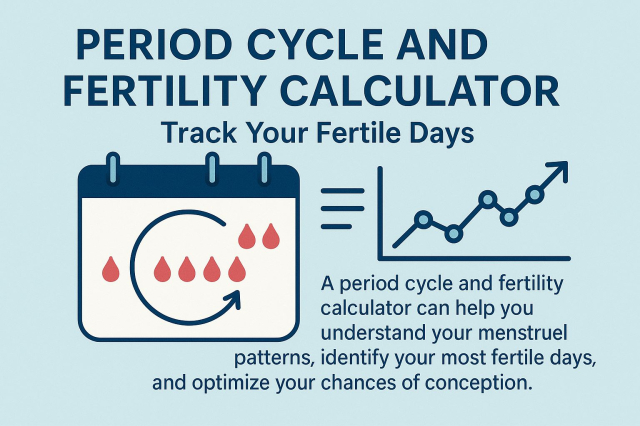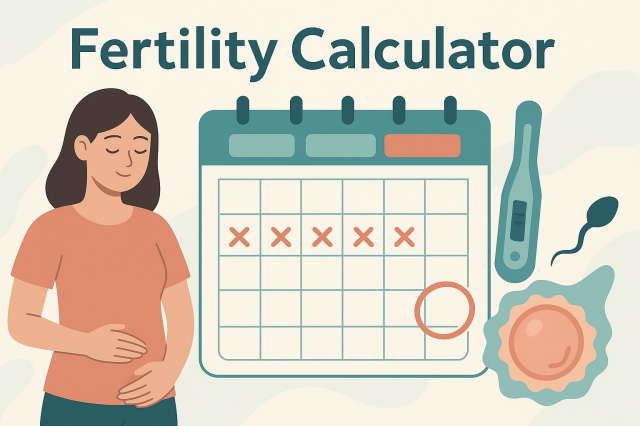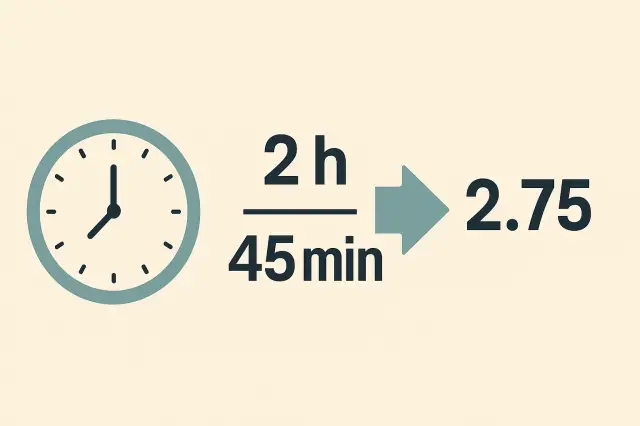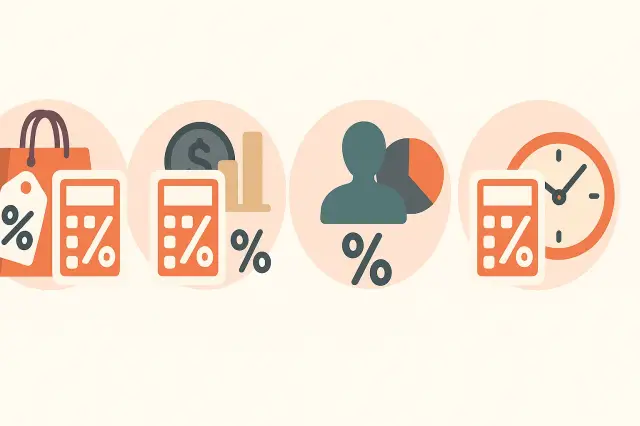A period cycle and fertility calculator helps individuals understand their menstrual cycles and determine their most fertile days. Tracking the menstrual cycle can assist in predicting the next period and optimizing chances for conception. Understanding the phases of the menstrual cycle is crucial for interpreting fertility signs. By using a fertility calculator, users can gain insights into their ovulation patterns and enhance their reproductive health.
Understanding the Menstrual Cycle
Grasping the nuances of the menstrual cycle is vital for those interested in reproductive health. This section delves into the cycle's length, variability, and its distinct phases, each playing a key role in female fertility.
Cycle Length and Variability
The menstrual cycle typically lasts between 21 to 35 days, with 28 days being the average. However, variations are common among individuals. Factors influencing cycle length include age, hormonal changes, lifestyle, and overall health. A consistent cycle length often indicates regular hormonal function, while irregular cycles may signal underlying health concerns.
Phases of the Menstrual Cycle
The menstrual cycle is divided into several key phases, each characterized by distinct physiological processes:
Menstrual Phase
Lasting about 3 to 7 days, the menstrual phase begins with the shedding of the uterine lining. This process is driven by a drop in hormone levels after the luteal phase. During this time, women may experience various symptoms, including cramps and mood changes as the body adjusts.
Follicular Phase
Simultaneously beginning with the menstrual phase, the follicular phase lasts from day 1 to approximately day 13. In this phase, the brain releases follicle-stimulating hormone (FSH), aiding the growth of ovarian follicles. As follicles mature, they prepare to release an egg. The body also increases levels of estrogen, which helps thicken the uterine lining.
Ovulation
Ovulation occurs around day 14 in a standard 28-day cycle. This phase is marked by a surge in luteinizing hormone (LH), causing the release of a mature egg from a dominant follicle. The egg has a short lifespan of about 12 to 24 hours, making this a critical time frame for conception.
Luteal Phase
Following ovulation, the luteal phase extends from day 15 to day 28. During this period, the ruptured follicle transforms into the corpus luteum, which secretes progesterone. This hormone supports the uterine lining for potential implantation of a fertilized egg. If fertilization does not occur, hormone levels drop, triggering the next menstrual phase.
Ovulation and Fertility

Understanding ovulation is crucial for anyone looking to enhance their fertility. Ovulation marks the release of an egg from the ovary and is the most fertile period within the menstrual cycle.
Signs of Ovulation
Recognizing the signs of ovulation can greatly assist in pinpointing fertile days. Various physiological changes occur during this time.
Basal Body Temperature Changes
One of the most telling signs of ovulation is a slight increase in basal body temperature. Typically, a woman's temperature will rise by about 0.5 to 1 degree Fahrenheit after ovulation due to increased progesterone production. Tracking these temperature changes over time can help in identifying ovulation cycles more accurately.
Cervical Mucus Variations
Cervical mucus undergoes significant changes as ovulation approaches. During the fertile window, the mucus becomes clear, stretchy, and similar to egg whites, which facilitates sperm movement. This change is a natural indicator that ovulation is near.
Physical Symptoms
Some women may experience discomfort known as mittelschmerz or ovulation pain, which occurs on one side of the abdomen during ovulation. Other symptoms can include breast tenderness, increased libido, and mood fluctuations. Paying attention to these physical signs can provide insight into the timing of ovulation.
The Fertile Window
The fertile window encompasses the days leading up to and including ovulation. This period usually spans around six days, comprising the five days before ovulation and the day of ovulation itself. Engaging in sexual activity during this window increases the likelihood of conception, as sperm can survive in the female reproductive tract for several days.
Sperm Survival and Timing
Sperm can remain viable for up to five days in optimal conditions within the female body. Therefore, timing intercourse strategically around ovulation—one to two days before—is essential to maximize chances of fertilization. Understanding this aspect of fertility allows couples to plan effectively when trying to conceive.
Using a Fertility Calculator
Fertility calculators are valuable tools for individuals tracking their reproductive health. They provide insights about ovulation and fertile days, assisting in family planning and conception efforts.
Calculating Your Ovulation Date
Determining the ovulation date is essential for identifying the most fertile period within the menstrual cycle. By knowing this date, individuals can increase their chances of conception. Ovulation typically occurs approximately 14 days before the start of the next menstrual period for those with regular cycles. To calculate the ovulation date, follow these steps:
- Record the first day of your last menstrual period.
- Note the average length of your menstrual cycle.
- Subtract 14 days from the estimated start date of your next period.
This method provides a rough estimate. Variations in cycle length may require adjustments. Using fertility calculators available online can refine this estimate based on personal cycle history.
Tracking Your Menstrual Cycle
Regularly monitoring the menstrual cycle can yield valuable data on individual patterns and fluctuations. This tracking assists in recognizing deviations and helps pinpoint ovulation with greater accuracy. Here are some effective methods for tracking cycles:
- Maintain a calendar to log the start and end dates of menstrual periods.
- Utilize mobile apps designed for menstrual tracking, offering reminders and insights.
- Record physical and emotional symptoms during each phase of the cycle.
Collecting this information not only aids in predicting ovulation but can also highlight potential health issues if cycles are irregular.
Benefits of Fertility Calculators
Fertility calculators offer numerous advantages for those trying to conceive. They simplify the understanding of the menstrual cycle and help users interpret their data effectively. Key benefits include:
- Convenience of calculating fertile windows quickly.
- Customization to individual cycle lengths and symptoms.
- Visual aids, such as calendars or graphs, for easy interpretation of data.
- Access to educational resources on fertility and reproductive health.
Overall, these tools empower individuals with knowledge, fostering informed decisions regarding fertility and enhancing the chances for conception.
Strategies for Enhancing Fertility
Enhancing fertility involves a combination of healthy lifestyle choices and understanding reproductive health. The following strategies can support individuals on their journey to conception.
Optimizing Your Health
Maintaining overall health is crucial for optimal fertility. Factors such as nutrition, weight, and lifestyle choices can significantly impact reproductive health.
Heart Healthy Eating
A balanced diet rich in nutrients plays a vital role in fertility. Foods that promote heart health are also beneficial for reproductive wellness. Consider incorporating the following:
- Fruits and vegetables: High in antioxidants, vitamins, and minerals.
- Whole grains: Sources of fiber that support hormonal balance.
- Healthy fats: Include avocados, nuts, and olive oil for optimal body function.
- Lean proteins: Fish, poultry, and legumes contribute to a well-rounded diet.
Maintaining a Healthy Weight
Both underweight and overweight conditions can negatively affect menstrual cycles and ovulation. A healthy body weight is more likely to promote regular cycles:
- Consulting with a healthcare provider can help set realistic weight goals.
- Engaging in regular physical activity fosters overall well-being and weight management.
Reducing Stress
High levels of stress can interfere with hormonal balance and ovulation. Finding ways to manage stress effectively is essential:
- Practicing mindfulness activities such as yoga or meditation can help lower stress levels.
- Regular exercise can also serve as a natural stress reliever.
- Establishing a support system of friends and family can provide emotional stability.
Frequent Sexual Activity
Engaging in regular sexual activity can increase the chances of conception. Experts suggest that challenges in timing ovulation can be mitigated by:
- Having intercourse 1-2 days prior to ovulation and on the day of ovulation.
- Maintaining an open line of communication with partners about fertility goals.
Questions About Getting Pregnant
Understanding the complexities of getting pregnant can alleviate concerns and dispel myths surrounding fertility. This section addresses common worries, the right time to seek medical support, and strategies to enhance the likelihood of conception.
Common Concerns and Misconceptions
Many people have questions regarding fertility and the processes involved in getting pregnant. This can contribute to misunderstandings. Some of the most frequently encountered misconceptions include:
- Age is the only factor affecting fertility: While age plays a significant role, lifestyle choices, health conditions, and timing also impact fertility.
- Conception happens immediately: It can take time for couples to conceive, and it is normal for this process to vary widely among individuals.
- Frequent intercourse guarantees pregnancy: While regular sexual activity is important, there is a window of fertility that should be observed.
- Stress does not affect fertility: Stress can have a significant impact on hormonal balance, influencing ovulation and overall reproductive health.
When to Seek Medical Advice
Seeking medical advice can be beneficial in various situations. Generally, it is prudent to consult a healthcare professional if:
- A couple has been trying to conceive for over a year without success, or six months if the woman is over 35.
- Irregular menstrual cycles or other hormonal issues are present, indicating potential fertility challenges.
- There are underlying health conditions such as diabetes, thyroid disorders, or reproductive health concerns.
- There are significant lifestyle factors, such as excessive alcohol use or smoking, that may affect fertility.
How to Improve Your Chances
Taking proactive steps to support reproductive health can increase the likelihood of conception. Consider the following strategies:
- Engaging in regular physical activity to maintain overall health and hormonal balance.
- Eating a balanced diet rich in fruits, vegetables, whole grains, and lean proteins to nourish the body.
- Monitoring the menstrual cycle to identify the fertile window accurately, as this can pinpoint optimal times for conception.
- Managing stress through relaxation techniques such as yoga and meditation, which can improve overall well-being.
- Avoiding harmful substances, including tobacco and excessive alcohol, to promote healthier reproductive outcomes.
Tools and Resources
Access to various tools and resources can significantly boost the ability to monitor menstrual cycles and understand fertility. The following sections outline important options available for tracking ovulation and enhancing chances of conception.
Online Ovulation Calculators
Online ovulation calculators are easy-to-use tools designed to help women estimate their ovulation dates based on cycle length and menstrual history. These calculators typically require users to input:
- The start date of the last menstrual period.
- The average length of their menstrual cycle.
- Any irregularities in their cycle patterns.
Once this data is entered, the calculator generates a personalized ovulation calendar. This calendar will highlight the most fertile days, which can be especially useful for those trying to conceive.
Ovulation Predictor Kits
Ovulation predictor kits (OPKs) are another popular tool. These kits measure hormone levels in urine, particularly luteinizing hormone (LH), which surges right before ovulation. The benefits of using OPKs include:
- Increased accuracy in detecting the LH surge.
- The ability to test daily until ovulation is detected.
- Convenience, as many kits are designed for at-home use.
Using OPKs in conjunction with tracking menstrual cycles can provide a comprehensive view of fertility patterns.
Charting Basal Body Temperature
Charting basal body temperature (BBT) is a natural method for tracking ovulation. This involves taking daily temperature readings each morning before getting out of bed. Fluctuations in BBT can indicate ovulation has occurred. Important aspects of BBT charting include:
- Identifying a consistent rise in temperature, which typically occurs after ovulation.
- Keeping a detailed record over several cycles to recognize personal patterns.
- Using graphs or apps to visualize the data for enhanced understanding.
BBT charting can be a valuable method for women who prefer a more traditional or non-invasive approach to monitor their fertility.
Privacy and personal data are crucial considerations when utilizing fertility apps and calculators. Ensuring the security of personal information while tracking reproductive health is vital for users.
Privacy and Personal Data
Using Apps Safely
When engaging with fertility apps, users must take proactive measures to protect their data. Safety practices include:
- Researching the app's reputation and reading user reviews to gauge trustworthiness.
- Choosing apps with strong encryption and security protocols to safeguard personal information.
- Regularly updating apps to benefit from the latest security enhancements.
- Limiting the sharing of personal data only to necessary information requested by the app.
- Being aware of the app's functionality and how it uses personal data to provide services.
Understanding Privacy Policies
A comprehensive understanding of privacy policies is essential for users of fertility apps. Key elements to look for in these documents include:
- The type of data collected, including sensitive health information, and how it is utilized.
- Details about data sharing practices, particularly with third parties, and the reasons for such sharing.
- Information regarding data retention periods, outlining how long personal data will be stored.
- Users' rights concerning their data, such as the ability to delete or access the information stored by the app.
- The processes in place for securing personal data against breaches or unauthorized access.
Users should prioritize apps with transparent privacy policies. This transparency fosters confidence and ensures informed decisions regarding personal data management. By being vigilant about both app safety and privacy policies, individuals can better protect their personal information while optimizing their reproductive health journey.




